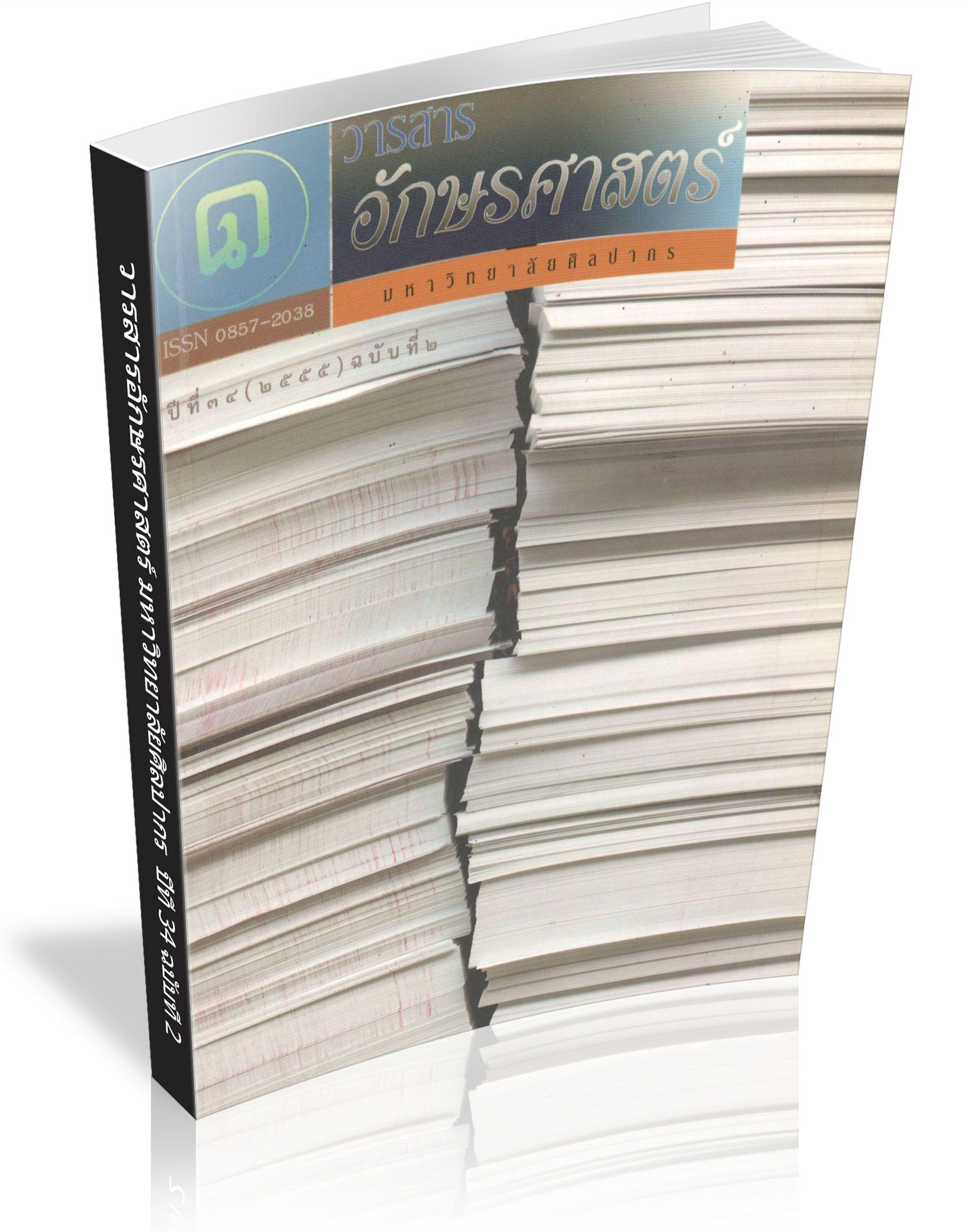Learning Styles : Factors Affecting Information Behavior of Thai Youths
Keywords:
learning styles, information behavior, Thai youthAbstract
This study aimed to investigate the relation of Thai youth's learning styles and their information behavior in the age of rapidly developing ICT that affects the informational environment. This study was a qualitative research study using theoretical sampling to select study areas and 30 participants who were in the last three years of their large high school. Grasha-Riechmann Student Learning Style Scale was used to determine students' learning styles. The results indicated that learning styles slightly affected information behavior since the collaborative learning of Thai youths was to share the task. Information behavior, thus, was at an individual level.
Downloads
References
อัจฉรา ธรรมาภรณ์. จิตวิทยาการเรียนรู้. ปัตตานี : คณะศึกษาศาสตร์ มหาวิทยาลัยสงขลานครินทร์ วิทยาเขตปัตตานี, ๒๕๓๑.
อาภาภรณ์ สิริอาคเนย์. การศึกษาแบบการเรียนของนักเรียนมัธยมศึกษาปีที่ ๕ ที่มีผลสัมฤทธิ์ทางการเรียนวิชาสังคมศึกษาต่างกัน. วิทยานิพนธ์ปริญญา ครุศาสตรมหาบัณฑิต ภาควิชามัธยมศึกษา บัณฑิตวิทยาลัย จุฬาลงกรณ์ มหาวิทยาลัย, ๒๕๓๓.
Bahar, Mehmet. “The relationships between pupils' learning styles and their performance in mini science projects.” Educational Sciences : Theory and Practice 9,1 (2009), 31-49.
Case, Donald Owen. Looking for Information : A survey of research on information seeking, needs, and behavior. 2nd ed. New York : Elsevier, 2007.
Grasha, A. F. Teaching with style. Pittsburgh, PA : Alliance, 1996.
Downloads
Published
How to Cite
Issue
Section
License
ผู้เขียนบทความต้องยินยอมในข้อกำหนดต่าง ๆ ของวารสารก่อนส่งบทความตีพิมพ์




